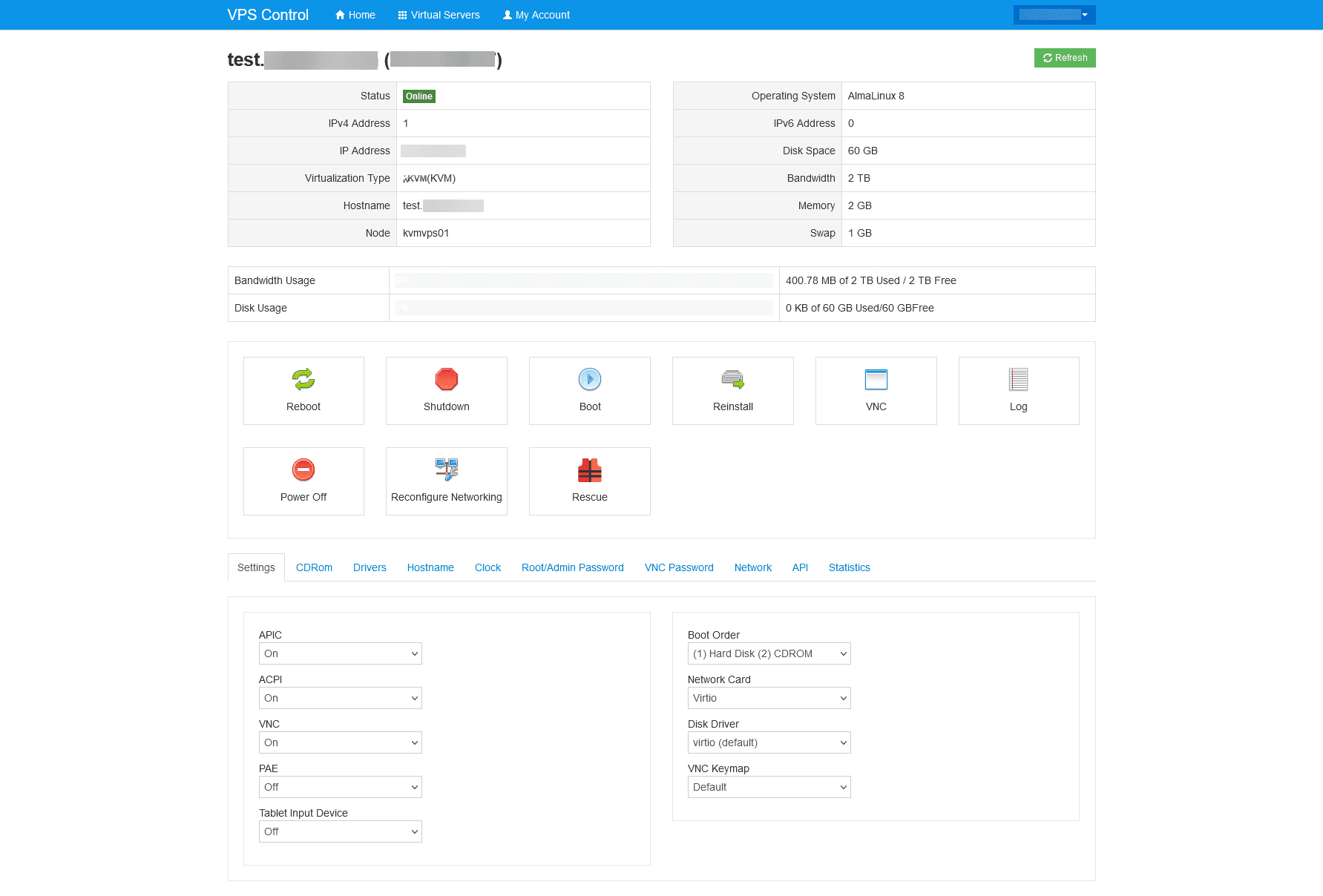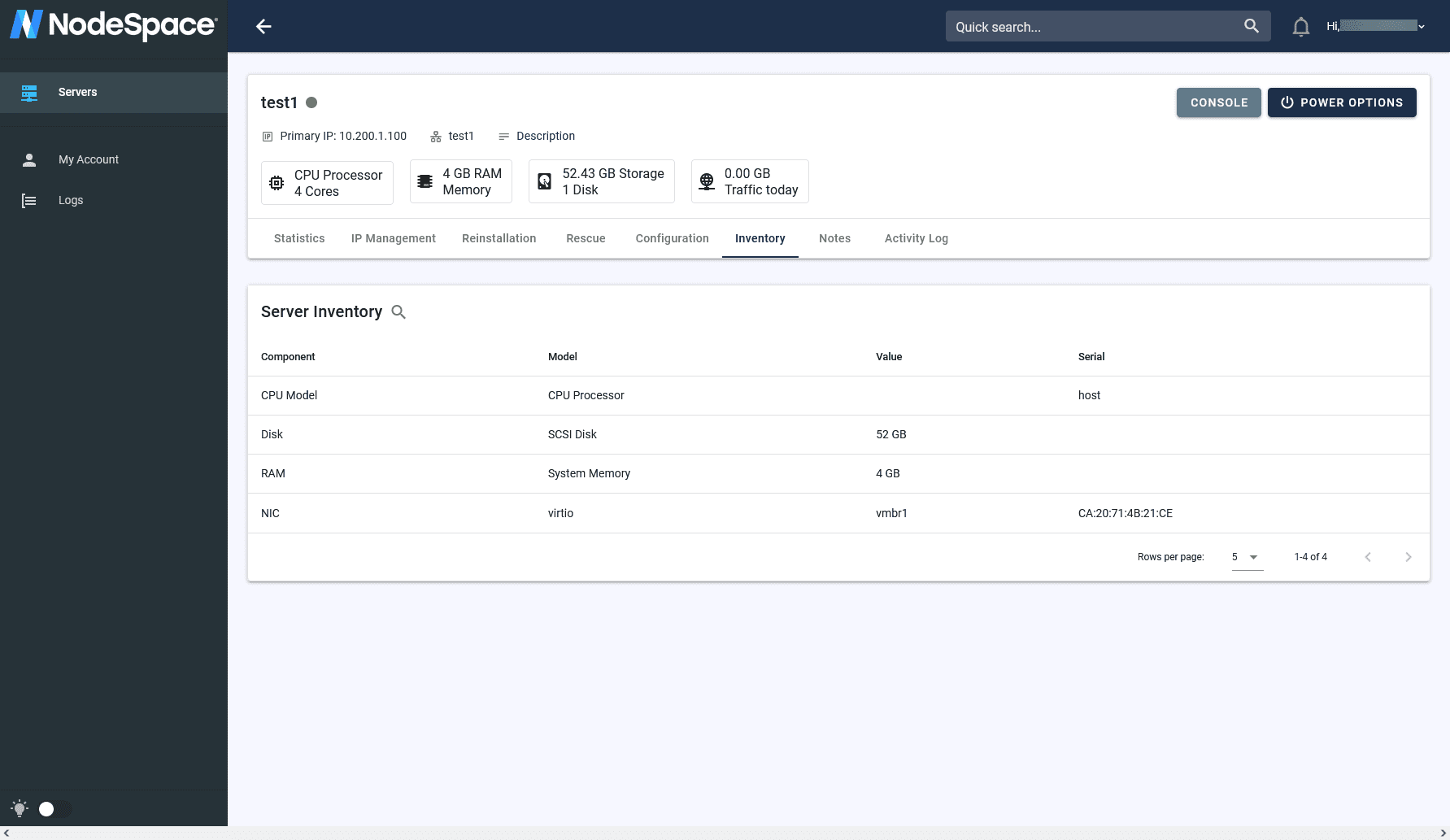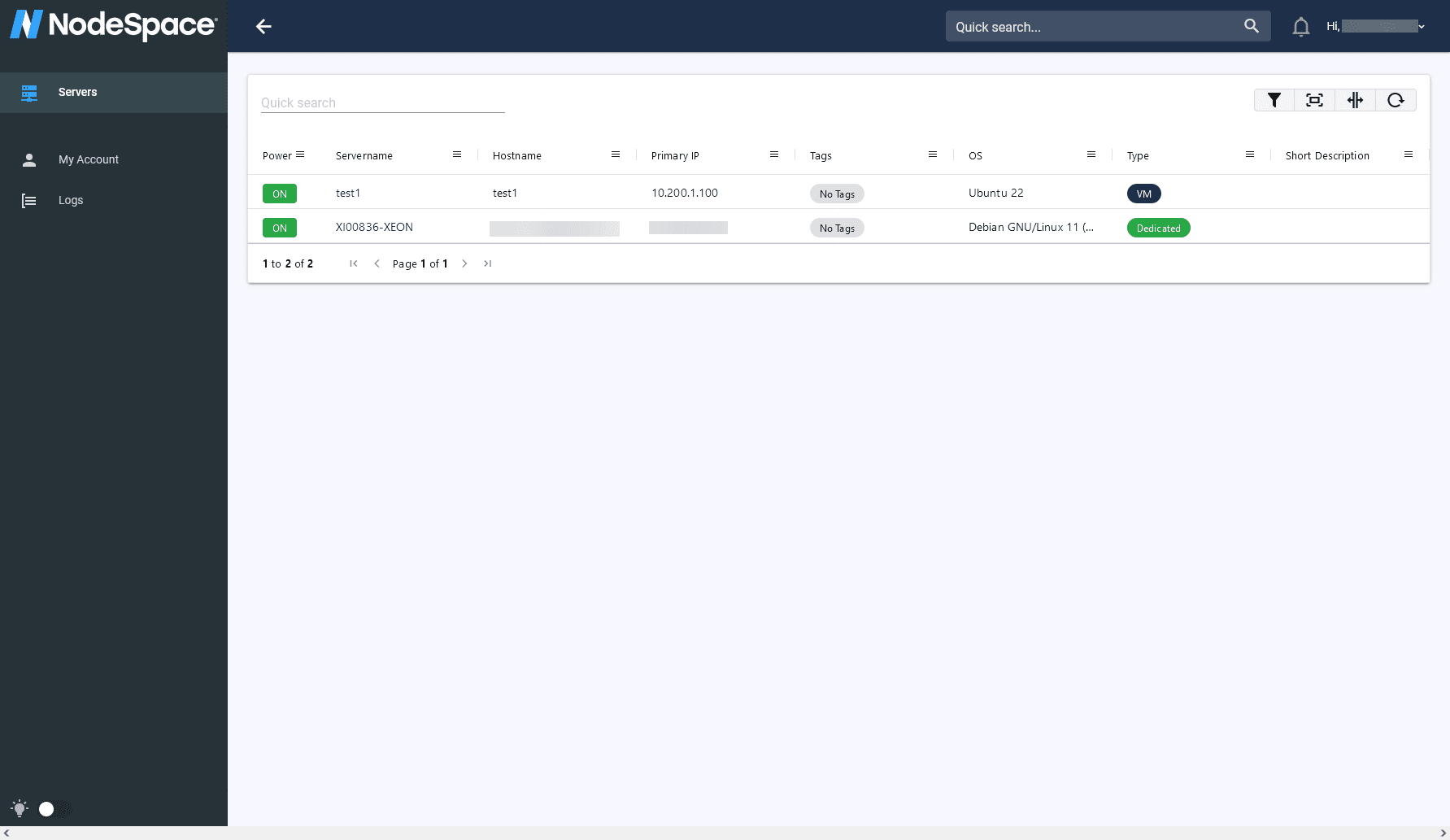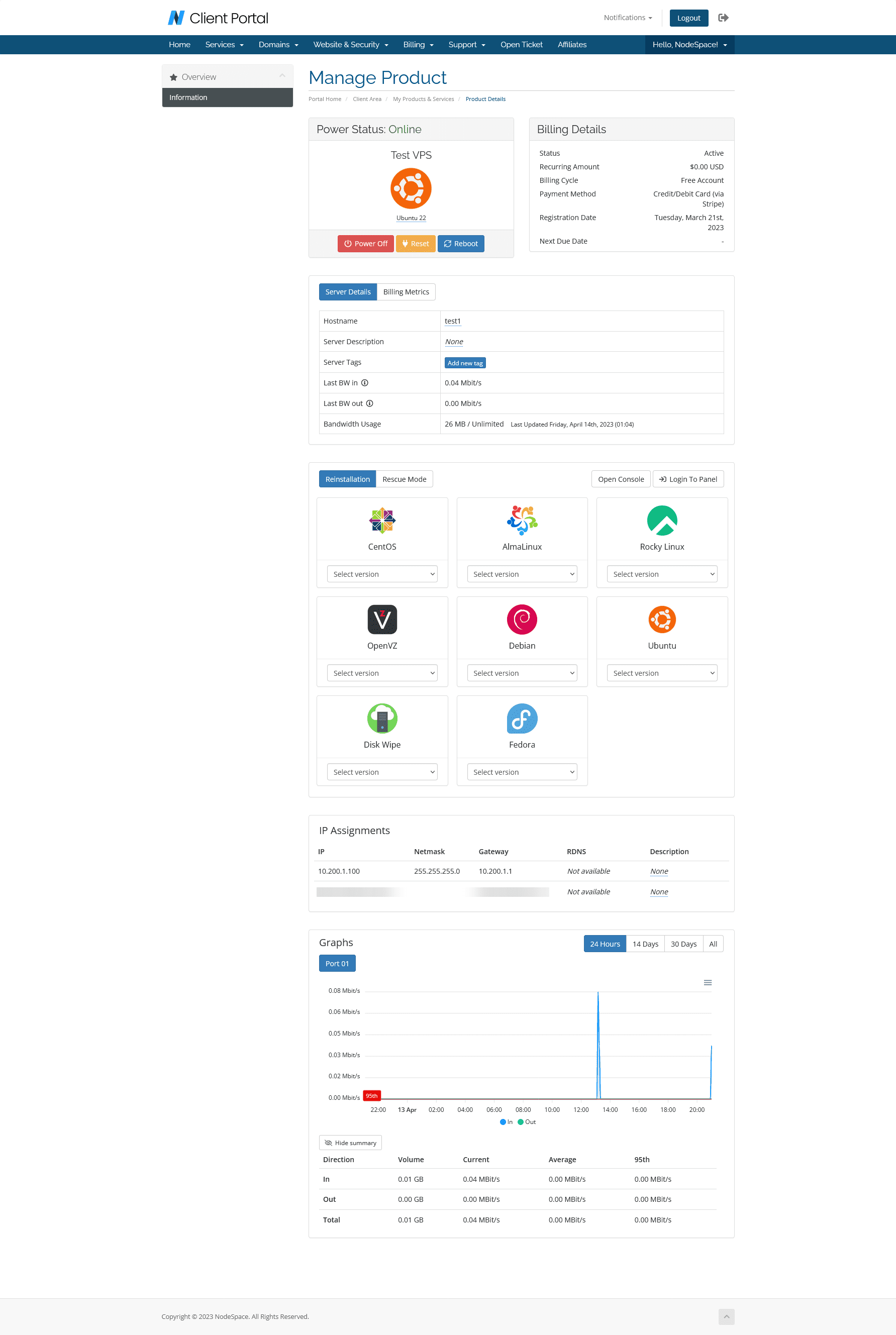I’m excited to share with you an inside look at what we’re doing to unify our server products as well as make management easier. We’ve been offering VPS hosting for a while now and I haven’t really been happy with it. It has always been treated different than our dedicated servers even though technically, there’s no reason for it. A server is a server, whether it’s virtual or bare metal. If you’ve been a client of NodeSpace for awhile, you know we like to keep things simple. Basically, we like to remove as much friction between you and your service. Or, in the words of Apple, “It just works!” but traditionally, VPS hosting has always been a little more complicated than bare metal. So we’re changing that.
Out with the old
Our current VPS platform uses SolusVM. It’s been around the web hosting industry for as long as I can remember. Unfortunately, it’s one of those software platforms that has seen very little change over all those years. If you’re not a VPS client, here’s what the SolusVM control panel looks like:

You can tell it’s powerful… but it looks straight out of 2002. Actually, over the years, this control panel hasn’t changed much. It still looks very much like it did back in the day. But some of our clients also have other services with us like a dedicated server. Enter our new Server Manager!
In with the unified new
As I mentioned, we like things to be simple. Simple for you as well as simple for us. Our new Server Manager was deployed earlier this year and allows our dedicated server clients to manage their servers easily through our client portal or the server manager portal. Here’s what a virtual server managed through our server manager looks like:

You can see there’s a lot of the same options – stats, re-installation, rescue mode, etc. And here’s where things become even better – if you have a dedicated server with us, you can see both (and manage both) from our server manager!

That’s simplicity and unification! This means that if you are searching our knowledge base and come across this article on how to manage your dedicated server, it actually applies to our virtual servers now (and I guess that means we have a few articles to re-write as well as delete!). So instead of having to manage two sets of documentation, one for dedicated servers and one for virtual servers, we can just have one.
Oh, and if you’re curious how it looks from within the client portal, here you go. Pretty simple and awesome, right?

So long, SolusVM!
We’re going to miss SolusVM, but it’s going to be hanging around for just a little bit longer. In order to get your server into our new platform, we’re going to be converting it to a Proxmox VE VM. Depending on how big your VPS is will determine how long the conversion will take. We’re going to have to do some shuffling around so there will be some temporary downtime scheduled over the course of several weeks as well as when your VPS is converted.
We will be contacting clients individually about when your VPS will be converted.
